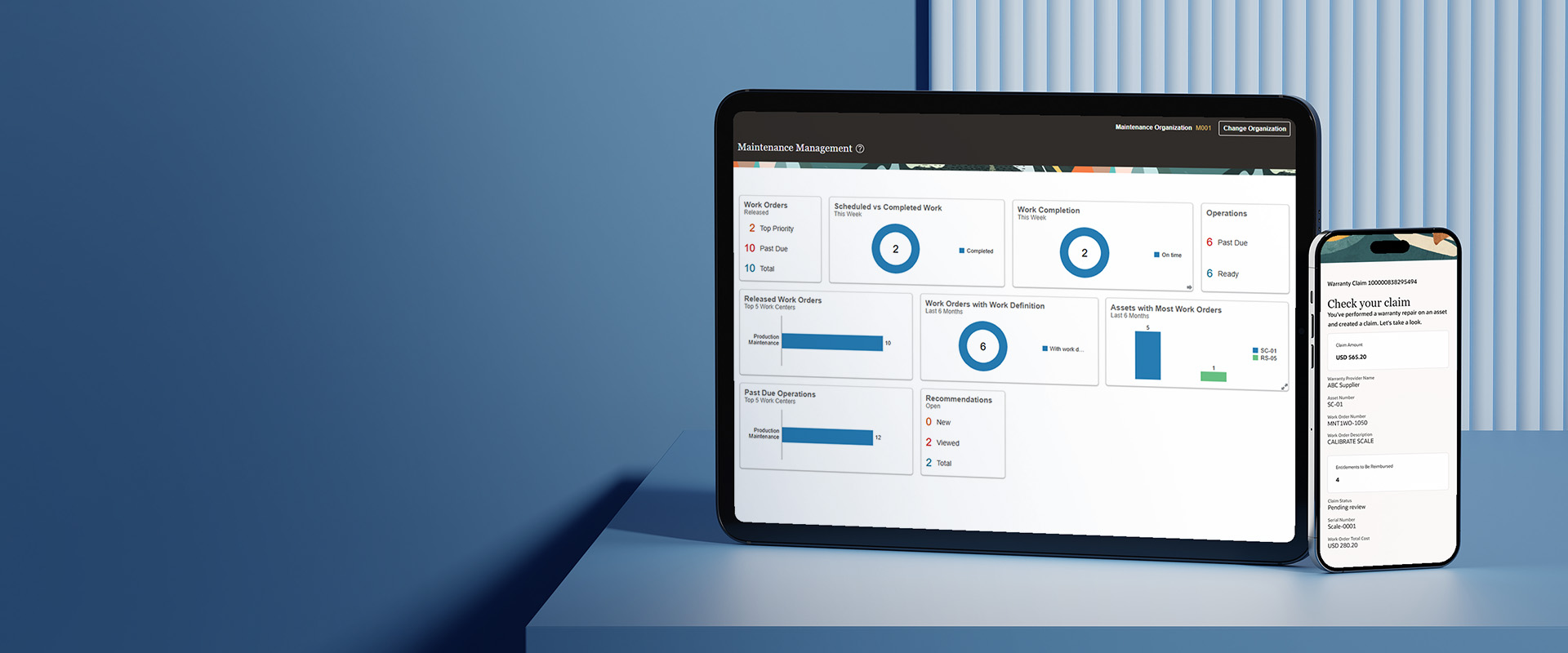Oracle Integration Cloud simplifies and enhances business procedures, facilitating smooth application connectivity and process automation.
In today's tech landscape, enterprises opt for top-tier diverse applications to fulfill various functions and ensure smooth cross-application business transactions. The overarching goal is to achieve operational efficiency by seamlessly integrating and orchestrating processes across these applications.
What is Operational efficiency?
Operational efficiency is a measure of how effectively a business uses its resources to produce results. This applies to various aspects of a company, from customer-related activities like marketing to backend operations like inventory management. Integrating the different systems using OIC is the solution to improve efficiency. OIC has many features that help the business integrate systems and perform better.
How OIC Helps to Improve Operational Efficiency –
Oracle Integration Cloud presents a cohesive platform enabling seamless process automation, application integration, and result analysis within a unified framework, and improves Operational Efficiency.
- Integrate Systems to establish a Single Source of Truth
- Consolidate the System of Record for Better Decision Making
- Configure Workflows to Achieve Better Efficiency
- Avoid Human Error with Process Automation
- Set up Templates for Repetitive Activities
How Jade Supports Operational Efficiency with Oracle Integration Cloud?
Jade follows Oracle standard practices for development. The following are the major points to be taken care of for the successful implementation of OIC business processes.
Pre-requisite before development starts -
- Understand the requirement clearly.
- Design a process diagram to depict the process flow.
- Get the sign-off from a business on the requirement. This is very important.
- Create a mapping table that will map the source fields to the target system field.
- Identify the mandatory and optional values in the target system.
- Identify the source of each column/field of the target system.
OIC Administration –
- Have separate developing OIC instances DEV, TEST, and PROD.
- Create users and assign appropriate roles(OIC developer, OIC Administrator, etc ) to the users as per requirement.
- Monitor the Integration execution using the dashboard.
Let's delve into the best practices for Oracle Integration Cloud (OIC) Services:
1. Upgrade to the Latest OIC Version: Ensure you're running the most recent version of OIC to benefit from bug fixes, performance enhancements, and access to new features.
2. Precisely Define Integration Objectives: Clearly outline integration goals and data flow requirements before designing integrations, helping you select the right OIC components.
3. Connector Proficiency: Thoroughly understand the capabilities and limitations of each connector. Opt for connectors that align with your applications' data formats and protocols.
4. Consistent Naming Conventions: Adopt a uniform naming convention for integrations, connections, and artifacts. This eases navigation and maintenance for both you and your team.
5. Version Control for Integration Artifacts: Leverage OIC's versioning capabilities to maintain multiple iterations of integration flows. This ensures a smooth rollout of changes and easy rollback if needed.
6. Effective Error Management: Implement robust error handling mechanisms, such as fault policies and error notifications, to promptly identify, log, and address integration failures.
7. Optimize Performance with Monitoring: Regularly monitor integration performance metrics, like response times and error rates, using OIC's monitoring tools. Use this data to proactively optimize integration performance.
8. Thorough Testing and Validation: Rigorously test integrations across different scenarios and data volumes. Utilize OIC's testing features, including payload tracing and debug logs, to troubleshoot and fine-tune.
9. Secure Data Transmission: Implement secure communication protocols, such as HTTPS and OAuth, when configuring connections between OIC and external systems. Encrypt sensitive data to safeguard information.
10. Efficient Data Transformation: Utilize OIC's built-in transformation capabilities to map data between different formats and structures, ensuring seamless interoperability between systems.
11. Resource Management: Optimize resource consumption by configuring thread settings, connection pooling, and other performance-related parameters based on integration requirements.
12. Documentation and Collaboration: Maintain comprehensive documentation detailing integration design, configurations, and error-handling procedures. Foster collaboration by sharing documentation with your team.
13. Regular Backup and Recovery: Establish a backup and recovery strategy for critical integration artifacts and configurations to mitigate data loss risks and ensure business continuity.
14. Automation and Scheduled Jobs: Utilize OIC's scheduling capabilities to efficiently automate recurring integration tasks, data synchronization, and batch processing.
15. Ongoing Training and Skill Development: Continuously enhance your team's skills through training, workshops, and hands-on practice to stay updated with OIC's evolving capabilities.
Effective Development Methods for Oracle Integration Cloud (OIC)
- Identify the source and target system.
- Know the data format ( file /API ) for source and target systems.
- As far as possible, leverage existing connectors/adaptors.
- Use security tokens if connecting systems support or need them. Having additional security is always recommended.
- Integration processes handling files should have a file encryption mechanism as far as possible.
- Identify the common components if there are multiple integrations. Use these reusable components in all integration processes. This is to standardize the development.
- Use the appropriate integration style.
- Use REST connections as far as possible.
- Every invocation should have a Try-Catch logic.
- Include Build retry logic for failed / errored invocations in integration.
- Lookup provides the capability to map values across vocabularies or systems. For example, you can map country codes, city codes, currency codes, and so on.
- Group integrations into a package. When you import or export the package to or from Oracle Integration, all integrations in that package are imported or exported.
- After each run of every integration, send success and error notifications to the concerned persons /teams /DL.
Benefits of Improving Operational Efficiency:
Smooth operations and workflows enable companies to prioritize customer care and order fulfillment, ensuring top-notch service provision. As a result, enhanced operational efficiency can lead to increased sales, customer satisfaction, revenue, and profit margins.
Oracle Integration Cloud Services Offer the Following Benefits:
- Establish seamless connectivity among various applications and stakeholders throughout the business process life cycle.
- Integrate existing technologies into novel business services, aligning with evolving business demands.
- Accelerate the delivery of new business innovations by swiftly connecting diverse applications and essential business functions.
- Attain a comprehensive 360-degree view of your entire business, enabling easy monitoring and analysis of applications, integrations, and workflows spanning the business process life cycle.
Concluding things in a nutshell, Oracle Integration Cloud (OIC) stands as a pivotal force in achieving operational efficiency by seamlessly integrating diverse applications. With meticulous development practices and strategic OIC utilization, businesses streamline workflows, optimize performance, and drive growth.
OIC's unified platform automates processes, harmonizes systems, and enhances decision-making. The synergy between OIC and adept implementation propels enterprises towards enhanced productivity, customer satisfaction, and elevated revenue in this dynamic tech landscape.













